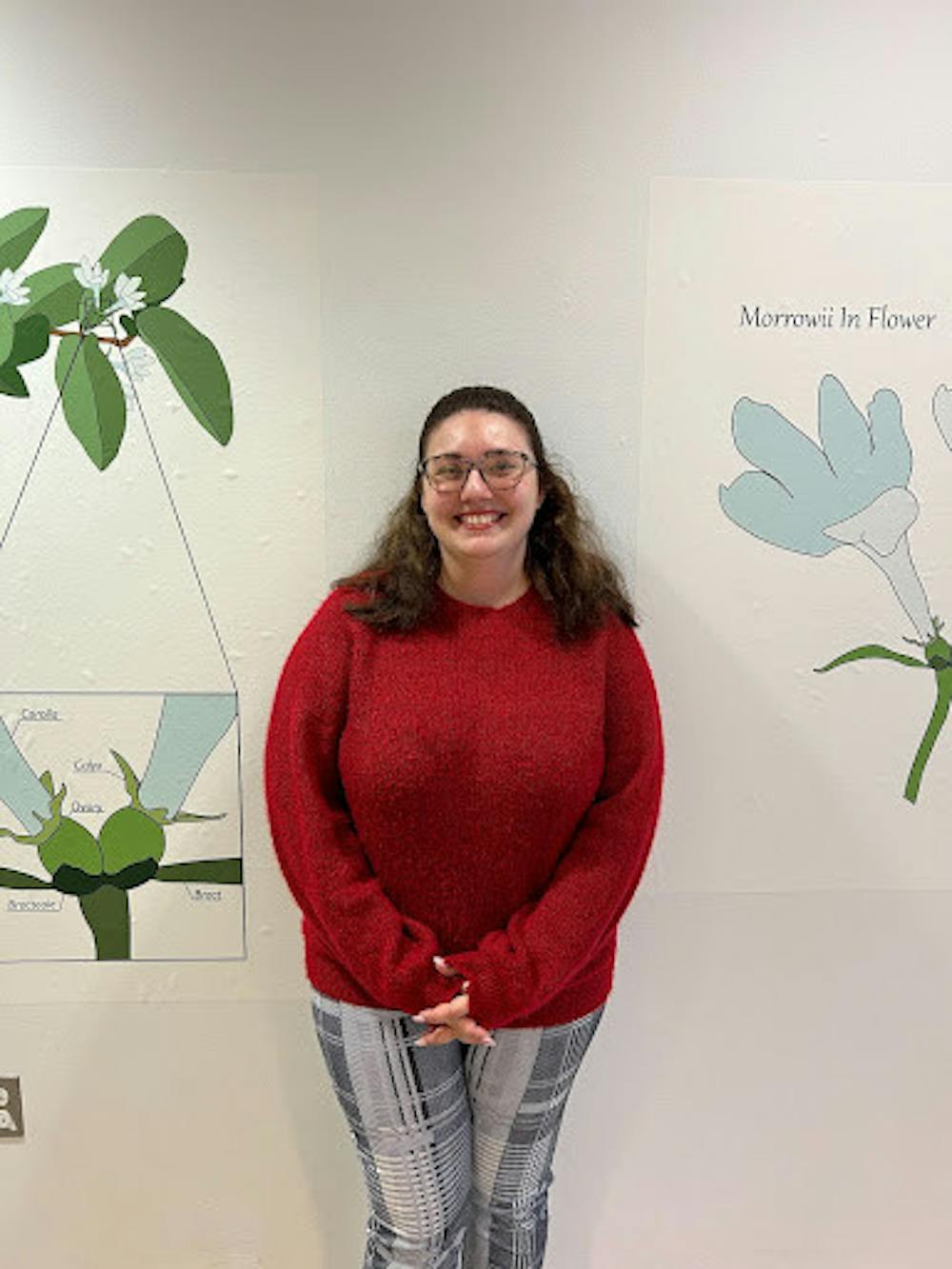By Jasmine Lee
Staff Writer
While art and science may not always be seen as natural companions, Leann Janzekovich, a senior biology and biological illustration double major, made it her mission to blend the two disciplines. The exhibition, “The Honeysuckle: a Fusion of Art and Science,” showcases scientific education and can be found in room 118 of the Arts and Interactive Multimedia Building, captivating audiences until March 28.
Using biological illustration, she aimed to make scientific concepts easier for the public to understand. Janzekovich aimed to present research on honeysuckle floral evolution, particularly Lonicera species, to a non-scientific audience in an engaging, accessible and impartial manner.
Janzekovich addressed the prevalent issue of insufficient botanical knowledge and communication skills among the general population, which she linked to the concept of Plant Awareness Disparity.
Janzekovich defined this term as “the idea that people tend not to notice or appreciate the plants in their environment, rather seeing the world through a human or animal-centric perspective and seeing plants as inferior,” according to a statement on the School of Arts and Communication’s website.
In an interview, Janzekovich expressed that her artistic intentions were to offer clarity on plant definitions and anatomy to those who might observe plants without comprehending what they are seeing. This aims to empower individuals to acquire knowledge and cultivate a deeper appreciation for plants.
“It is important for people to know about honeysuckles, not only because of their unique traits, but also because research done on honeysuckles is most likely able to be applied to many other plants — which can help with conservation efforts, food production, habitat restoration, managing climate change and global warming, and many other issues that involve plants in any capacity,” she said.
Janzekovich found inspiration from a lab course she took with Professor Wendy Clement, which centered on plant systematics and evolution, with a specific focus on using honeysuckles as a model organism. In this lab, students mainly utilized digitized herbarium specimens to gather both qualitative and continuous quantitative data.
“My research focused on floral morphology evolution that we hypothesize influence and are influenced by pollinator selection. Honeysuckles are interesting in particular because of their ability to fuse organs, like the bracteoles and ovaries, which I show in my exhibit,” said Janzekovich.
As a means of expression, Janzekovich sought to utilize her background in graphic design. She acquired images of honeysuckles, sketched them by hand, and then used Illustrator to create a simplified outline depicting the structural elements in a line art style.
“This is definitely the starting point of my career in biological illustration. I hope to branch out from line illustrations to 3D scientific illustrations after getting my master’s,” said Janzekovich.
Additionally, Janzekovich showcased pressed plants that she collected as herbarium specimens, accompanied by magnifying glasses. This arrangement allowed viewers to closely inspect corollas, bracteoles and plant ovaries. Unlike the line art illustrations, this aspect enabled individuals to compare scientific diagram illustrations with real plant parts.
The exhibition also featured a section titled “How to Press a Plant,” which Janzekovich included to engage people in science.
“While pressing a plant may seem like a simple task, it creates a wealth of knowledge that researchers can use to collect data and test hypotheses. I also believe that the process of pressing a plant is creative, where the individual becomes an artist by making choices on how to present, press and lay out the plant,” said Janzekovich.
During an interview, Janzekovich conveyed the significance of this project to her, citing her lifelong love for nature, nurturing plants and conducting plant research as the highlight of her time at the College.
“It was a great experience to take so many things that I love — plants, art, science and educating people — and merge them into my first exhibit,” said Janzekovich.







